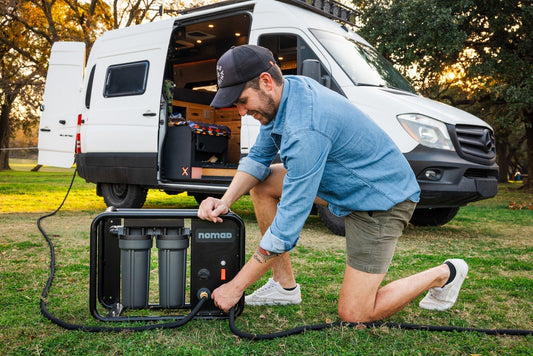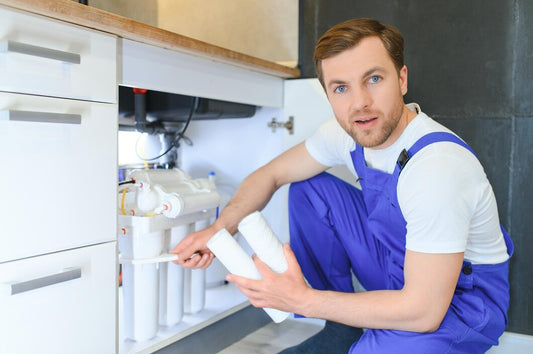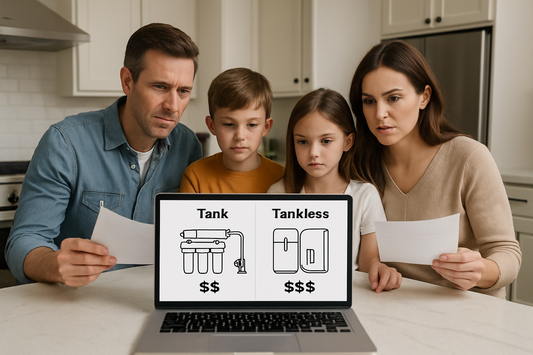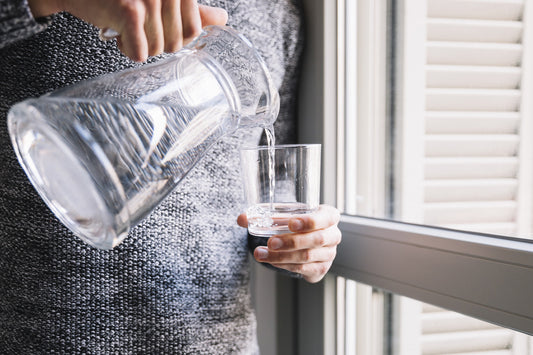Clean water has been humanity's greatest challenge for thousands of years. While we've developed sophisticated filtration systems, many ancient water purification methods remain surprisingly effective—especially when modern systems fail or aren't available.
Whether you're preparing for emergencies, living off-grid, or simply curious about time-tested techniques, these historical methods offer proven solutions that cost little and work reliably.

Ancient Methods vs Modern Technology: The Effectiveness Breakdown
Boiling Water: The Original Disinfectant
Effectiveness Rating: 9/10
Cost: Very Low
Accessibility: High
Our ancestors discovered that heating water over fire eliminated the invisible threats that made them sick. Today, we know boiling kills 99.9% of bacteria, viruses, and parasites within 1-3 minutes.
Best For: Emergency water purification methods, camping, power outages
Time Required: 1-3 minutes of rolling boil
Equipment Needed: Heat source and container
Sand and Charcoal Filtration: Nature's Filter System
Effectiveness Rating: 7/10
(physical contaminants), 8/10 (with charcoal)
Cost: Very Low Accessibility: High
Ancient Egyptians and early civilizations created multi-layer filters using sand, gravel, and charcoal. This method removes sediment, some bacteria, and many chemical contaminants through natural adsorption.
Best For: Cloudy water, removing taste and odor, pre-filtering before boiling
Time Required: 30 minutes to several hours (depending on volume)
Equipment Needed: Containers, sand, activated charcoal, cloth
Plant-Based Purification: The Moringa Method
Effectiveness Rating: 6/10
Cost: Very Low
Accessibility: Medium (requires specific plants)
Traditional cultures used crushed Moringa seeds, horsetail plants, and other natural coagulants to bind particles and bacteria, causing them to settle out of water.
Best For: Emergency situations with access to Moringa trees, sustainable long-term solutions
Time Required: 2-4 hours settling time
Equipment Needed: Moringa seeds, grinding tool, settling container

Image by EyeEm
Medieval Innovations That Shaped Modern Systems
Distillation: Pure Water Through Vapor
Effectiveness Rating: 10/10
Cost: Medium
Accessibility: Medium
Medieval alchemists perfected distillation, creating the purest water possible by collecting steam condensation. This method removes virtually all contaminants, including salts and heavy metals.
Best For: When highest purity is needed, saltwater desalination, chemical contamination
Time Required: 2-4 hours for meaningful quantities
Equipment Needed: Heat source, distillation apparatus or improvised setup
Coagulation with Natural Minerals
Effectiveness Rating: 7/10
Cost: Low
Accessibility: Medium
Adding alum or other natural coagulants causes tiny particles to clump together, making filtration more effective. This principle underlies modern water treatment plants.
Best For: Cloudy water with suspended particles, pre-treatment for other methods
Time Required: 30 minutes to 2 hours
Equipment Needed: Alum or natural coagulants, stirring implement
When Ancient Meets Modern: Hybrid Approaches
The most effective emergency water purification methods often combine historical techniques with modern understanding:
- Pre-filter through cloth (removes large debris)
- Sand/charcoal filter (removes particles and some contaminants)
- Boil for 3 minutes (kills remaining pathogens)
- Cool and store properly (prevents recontamination)
This four-step process rivals many modern systems for safety and reliability.
Cost and Accessibility Comparison
| Method | Setup Cost | Ongoing Cost | Skill Level | Materials Availability |
|---|---|---|---|---|
| Boiling | Free | Fuel costs | Beginner | Universal |
| Sand/Charcoal Filter | Under $20 | Very low | Beginner | Common |
| Plant Coagulation | Free | None | Intermediate | Location-dependent |
| Distillation | $30-100 | Fuel costs | Intermediate | Moderate |
| Modern RO System | $200-500 | Filter replacements | Easy | Requires electricity |
Safety Considerations for Historical Methods
While these types of water filtration have proven effective over centuries, they require proper technique:
- Boiling: Maintain rolling boil for full 3 minutes at sea level, longer at altitude
- Filtration: Replace filter media regularly to prevent bacterial growth
- Plant methods: Ensure proper plant identification and preparation
- Storage: Use clean containers and consume filtered water within 24 hours
For consistent daily use, modern filtration systems offer convenience and standardized safety. However, knowing these historical techniques provides valuable backup options.

Modern Applications of Ancient Wisdom
Today's water treatment professionals still use principles discovered thousands of years ago. Municipal water plants employ coagulation, sedimentation, and sand filtration alongside modern additions like chlorination and UV treatment.
For off-grid enthusiasts and emergency preparedness, these time-tested water purification methods offer reliable alternatives when portable water filtration systems aren't available or need supplementation.
Whether you're building an emergency kit or exploring sustainable living options, consider adding materials for historical purification methods to your water treatment collection. These backup techniques have sustained human civilization for millennia—they'll work when you need them most.
FAQ: People Also Ask
How long should you boil water to purify it?
Boil water at a rolling boil for 1 minute at sea level, 3 minutes above 6,500 feet elevation to kill bacteria, viruses, and parasites effectively.
What is the oldest method of water purification?
Boiling water over fire is the oldest known purification method, used by early humans over 10,000 years ago to make water safe for drinking.
Can sand and charcoal really filter water?
Yes, sand removes particles and sediment while activated charcoal absorbs chemicals, odors, and some bacteria through natural adsorption processes.
Are ancient water purification methods safe?
When performed correctly, methods like boiling and sand filtration are very safe and effective, though modern systems offer more consistent results and convenience.





